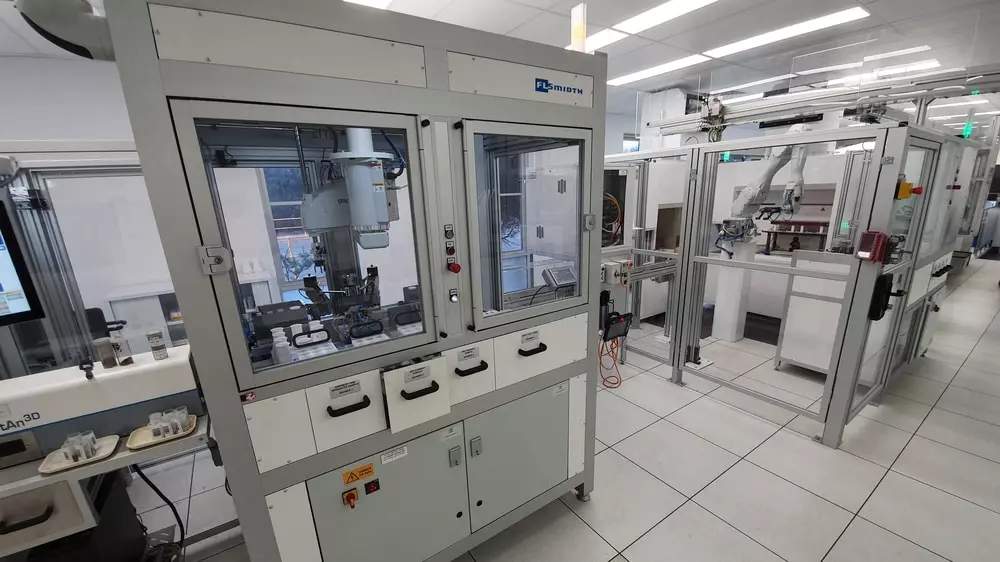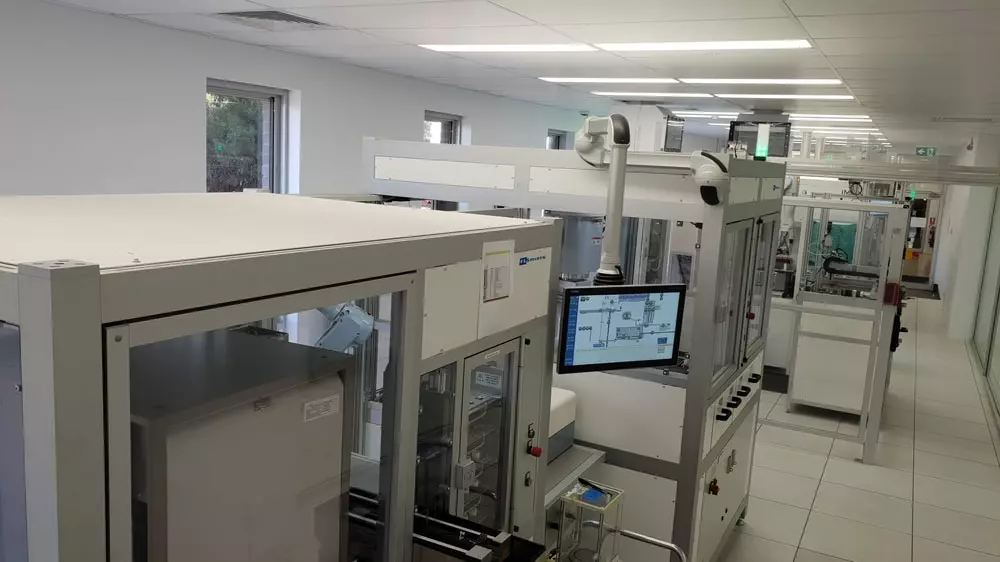-
Lab automation increases plant productivity and improves health and safety at Australian laboratory
Background and objectives
At a plant site in Western Australia, lab employees would spend their days and nights preparing and analysing samples. Results from these samples are used to control the various plant processes. Working in shifts, they completed analysis of 250 samples per day. That’s 250 times that a lab technician has to:
- Undo a sample flask of hot liquor
- Take an aliquot
- Dilute the sample
- Filter it
- Take it to another room for analysis
- Complete titration
- Validate results
- Dispose of the sample and clean the glassware
“When they looked into it, they found that the repetitive workload was taking its toll on their team. They had instances of sore elbows, shoulders, necks, thumbs, wrists and knees – all RSI injuries. They were also at risk of exposure to nickel dust, chemicals and fumes. Not to mention the noise and other occupational hazards involved in laboratory work. The customer wanted to make changes to better protect their staff. They recognised that improving sample turnaround times, precision and accuracy of result would increase productivity, not just in the laboratory but also in the plant, and could help reduce the use of hazardous chemicals,” explains Boyne Hohenstein, Global Product Line Manager, FLSmidth.

In 2016, the company began investigating ways to improve the health and safety of their laboratory staff. Was it time for a robot revolution?
Defining the project
When it comes to laboratory automation, FLSmidth is the world leader. The customer had done their research and came to us to see how we could help create a better working environment in the laboratory – and at the same time, raise productivity.
Together with the lab team, we embarked on a 6-week pre-feasibility study, including a full plant sampling and analytics review. Having completed the study, we proposed a solution to design, build, install and commission five automated laboratory preparation and analysis modules. This would both eliminate the manual handling of potentially dangerous chemicals and increase the sample processing capacity of the lab.
“The pre-feasibility study was critical to the success of this whole project,” says Boyne. “We were able to take this time to make sure we were all on the same page about what we needed and how it could be made possible. This clear, open dialogue paid dividends throughout all stages of project design and implementation.”

The solution
The modules and arrangement for the laboratory were designed in cooperation with the lab team to ensure the final layout was tailored to their needs and fully accessible. Much of the equipment is highly innovative, such as the 3D particle sizer, which takes a photo of nickel powder particle and uses 3D imagery to calculate sizing distribution. All processes such as liquid sample centrifuging, sample mixing, pipetting, dilutions, filtrations, digestions, titrations, and analysis is carried out automatically. Powder samples are weighed, digested and analysed automatically.
In the new laboratory, liquor processing and powder preparation are taken care of without any need for operator intervention. The laboratory technician simply has to place the flask on the input conveyor and collect it at the end after it has been cleaned and dried.
The digestion module uses engineering controls to manage the process of using chemicals and heat blocks to dissolve the nickel in solution. These processes take place inside an enclosed module with fume hoods. A robot dispenses the acids and handles all flasks from the point of entry until the task is complete, so there is no risk to the operator. Wash downs are also completed automatically. The module even includes an automated test tube sorter to eliminate the repetitive job of loading test tubes into position.
Two analytical modules are in situ that are capable of analysing all existing plant samples and future samples at a rate of up to 1200 samples per day – almost five times the rate of the manual laboratory. Results are automatically sent to the Plant Control Centre and Certificates of Analysis are automatically sent through to the marketing department.
Every module is enclosed by hard barriers, interlocks, safe modes and Castel key isolation systems to further protect the lab team. We also assisted in the development of procedures, standards and training materials to keep personnel safe.
“The emphasis throughout is on the health and safety of laboratory technicians. Their exposure to fumes and dangerous chemicals have been reduced, and those repetitive tasks that used to cause problems are now taken care of by robotics. In addition, we have dramatically scaled up the lab’s processing capacity so that they are able to process all samples on an hourly basis. It’s an amazing improvement,” says Boyne.
| Before | After |
|---|---|
| 250 samples per 24-hour shift | 1200 samples per day |
| Arduous manual handling | Automated sampling |
| Limited scalability | Capacity for growth and diversity |
Collaboration. Engagement. Communication.
“Throughout this project, we worked closely with the Laboratory Technician Group to ensure the end result would be exactly what they needed,” says Ryan Wilson, Engineering Manager, FLSmidth. “At every stage, from pre-feasibility, through 3D design walk-throughs, risk assessments and all the way to installation and commissioning we kept up a constant dialogue. Getting their feedback was critical to ensuring the success of the project, even on seemingly small things like the types of flask used.”
An FLSmidth Project Manager was enlisted to ensure project efficiency and readiness throughout the project life cycle. Together, we developed a strong relationship based on open and honest communication, a shared focus on safety and a solutions-oriented attitude. The project was delivered on time and on budget.
The results
The automated laboratory has delivered the productivity and safety benefits the team wanted – and more. Sample processing capacity has increased more than fourfold, giving the customer the ability to increase the recovery of nickel and cobalt and reduce ammonia consumption. The plant is also well equipped to expand and diversify, given the capacity and capabilities of its new laboratory.
Demolishing the old laboratory and building the new one also gave the team the chance to overhaul their facilities. They have ergonomically approved workspaces and have reduced noise levels by relocating the ICP chillers. They have also introduced a fixed-point gas monitoring system throughout the laboratory to further reduce health and safety risks. It’s not just a new space and a new way of working, it’s a whole new environment for their lab technicians.
| Project drivers | Results |
|---|---|
| Increasing productivity – Automated laboratory equipment allows the plant to increase the capacity of the laboratory to process all samples on an hourly basis. | At these sampling rates, ammonia consumption can be reduced by 5% - an environmental and economic benefit. In addition, improved control will enable the plant to increase extraction of cobalt, nickel and copper by 0.1%. |
| Reducing future costs – The automated equipment will enable the development of techniques to analyse new products such as PGMs, nickel sulphate and copper sulphate. | Being able to do this onsite saves the company approximately $200 000 per year in offsite sample preparation costs. |
| Improving health and safety – Automation reduces the laboratory technicians’ exposure to health and safety risks such as acid and ammonia fumes and laborious, repetitive tasks. | Staff are safer and have more time to complete other tasks. |